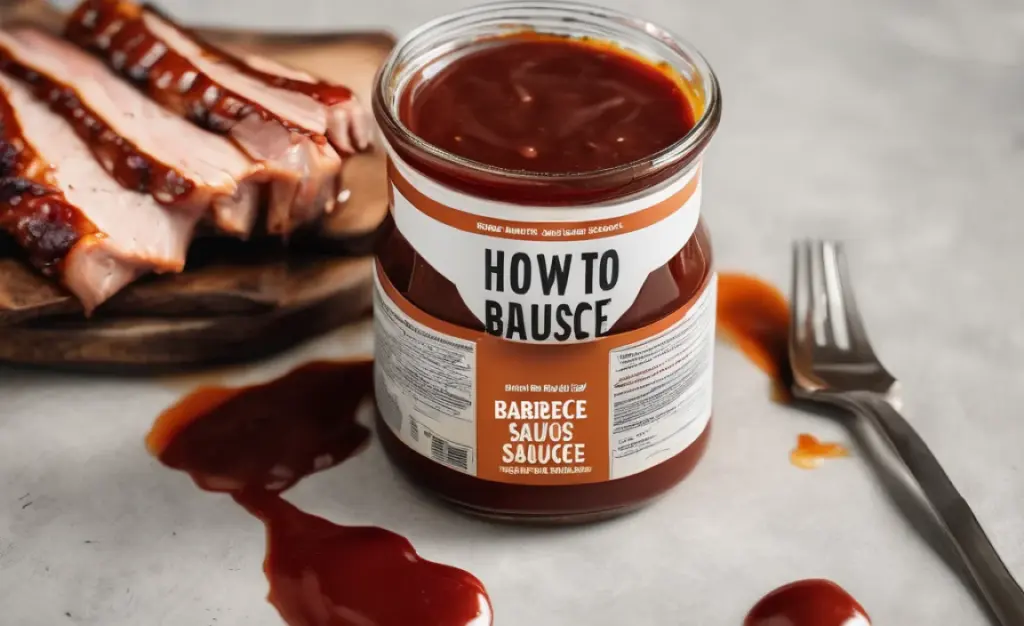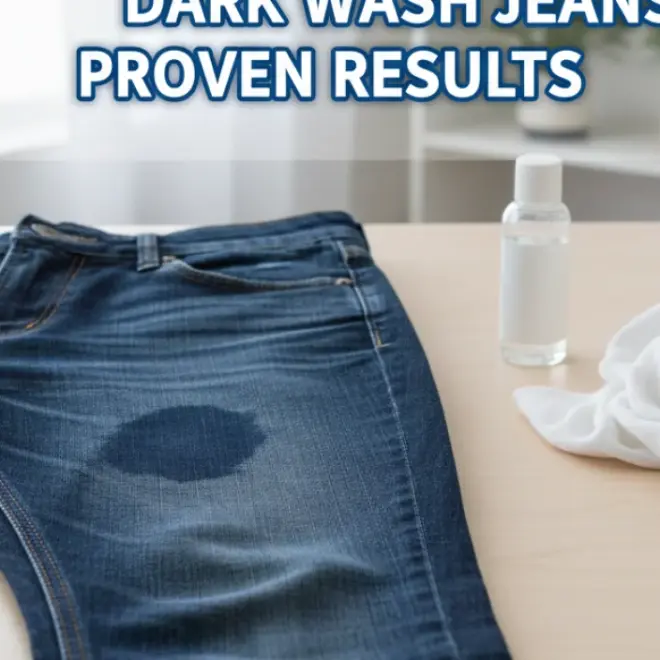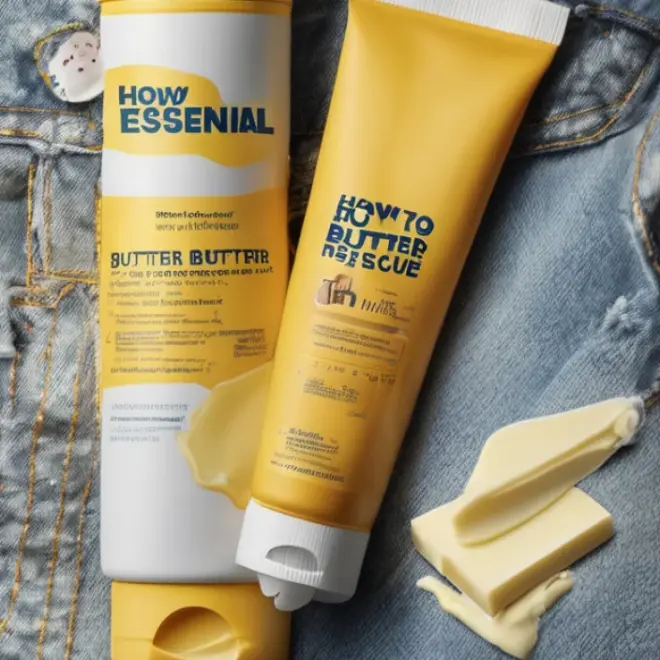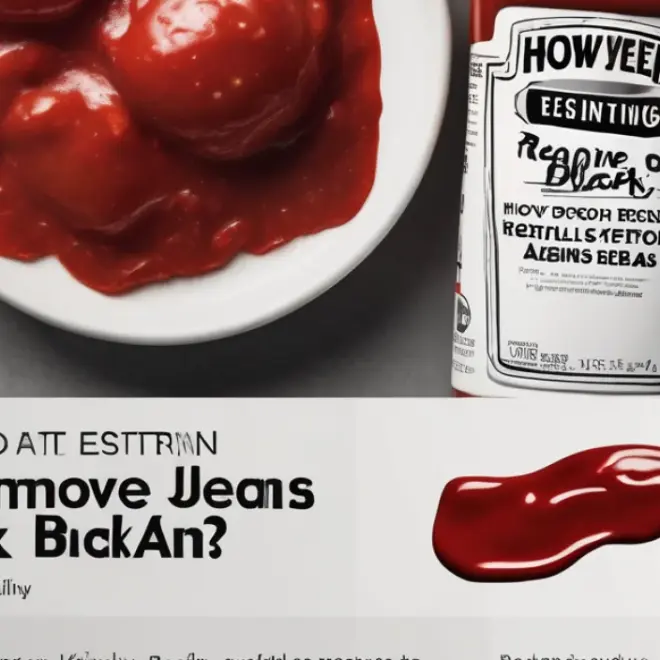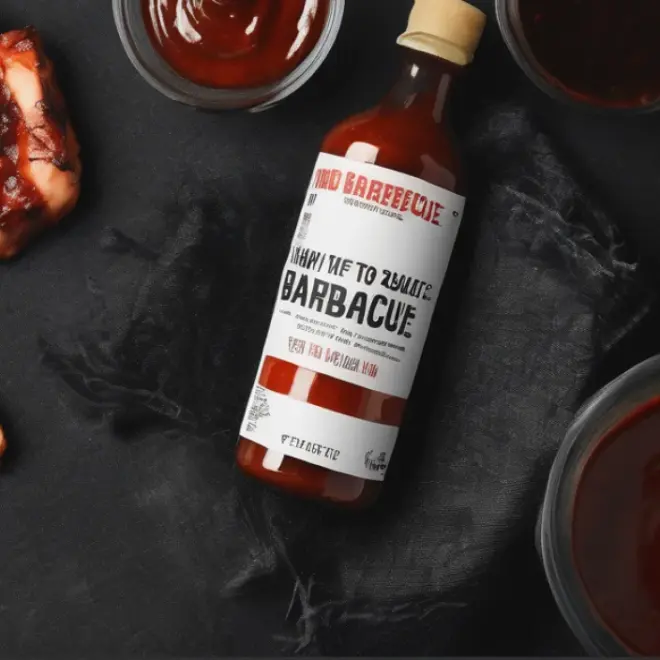Absolutely! Here’s the article, tailored to your specifications, as if written by Paul Fiore.
Quick Summary:
Don’t let barbecue sauce ruin your favorite jeans! This guide shows you how to effectively remove stains, even on light washes, using simple, everyday household items. Follow these proven steps to restore your denim and keep them looking great. Get ready to save your jeans!
The smell of a backyard barbecue is one of life’s simple pleasures. That smoky, sweet, tangy barbecue sauce, however, can quickly become a dreaded enemy of your favorite denim. Accidental drips and splatters happen to the best of us, and a dark stain on light-wash jeans can feel like a fashion disaster. But before you resign your beloved jeans to the “old rags” pile, take a breath. Removing barbecue sauce stains from denim is entirely achievable, even for beginners. With a few common household supplies and a clear plan, you can tackle these tough stains and restore your jeans to their former glory.
This article will guide you through the most effective methods, backed by simple, actionable steps. We’ll cover everything from immediate treatment to stubborn stain removal, ensuring you have the knowledge and confidence to rescue your jeans from barbecue sauce mishaps. Let’s get started on making those stains disappear.
Why Barbecue Sauce Stains Are Tricky (And How to Beat Them)
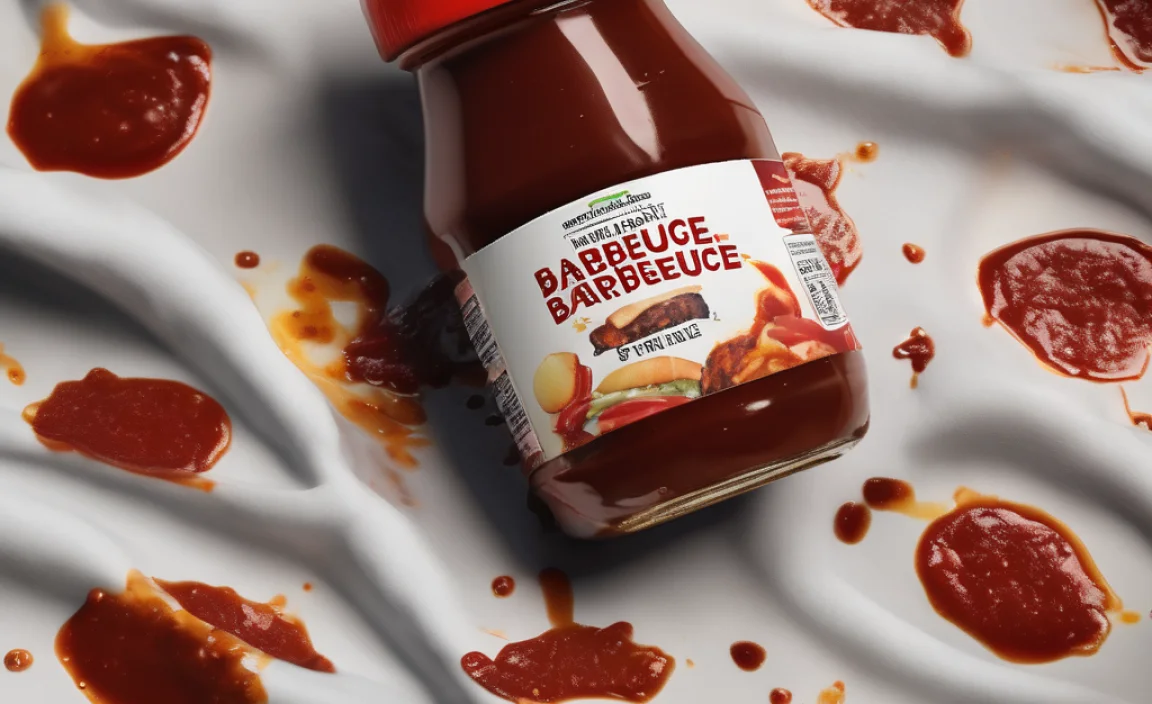
Barbecue sauce is notorious for its staining power due to its ingredients. The dark colors come from tomato paste or molasses, while sugars and oils can help the stain set deeply into fabric fibers. The longer a stain sits, the more challenging it becomes to remove. This is especially true for barbecue sauce, which can bind to cotton fibers in jeans, making it a persistent problem. However, the durable nature of denim also means it can withstand a good cleaning. The key is to act quickly and use the right techniques.
Understanding the enemy is half the battle. Barbecue sauce often contains a combination of sugars, acids (like vinegar or tomato), and pigments. The sugars can caramelize and set with heat, while the acids can break down some fabric dyes if left too long. The oils in ingredients like ketchup or oil-based marinades can also contribute to a greasy residue. But don’t worry, we’ll break down how to tackle each of these components effectively.
Immediate Action: The First 15 Minutes
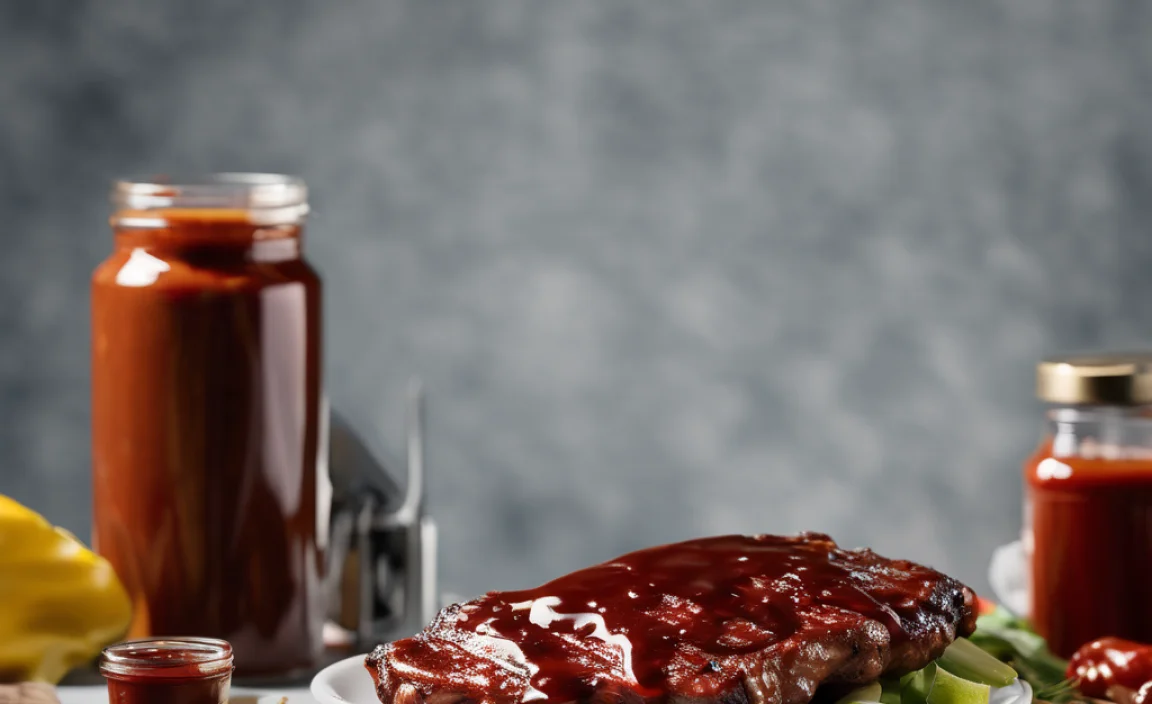
When barbecue sauce hits your jeans, time is your most important ally. The sooner you can treat the stain, the less likely it is to become permanent. Here’s what to do right away:
- Don’t Rub! Resist the urge to vigorously scrub the stain. This can push the sauce deeper into the denim fibers and spread it to a larger area.
- Scrape Away Excess: Gently use a dull knife, the edge of a credit card, or a spoon to lift off as much of the thick sauce as possible. Work from the outside of the stain inward to avoid spreading it.
- Blot, Don’t Rub: Take a clean, dry cloth or paper towel and gently blot the stained area. This will absorb some of the liquid and reduce the amount that seeps into the fabric.
Essential Tools for Stain Removal
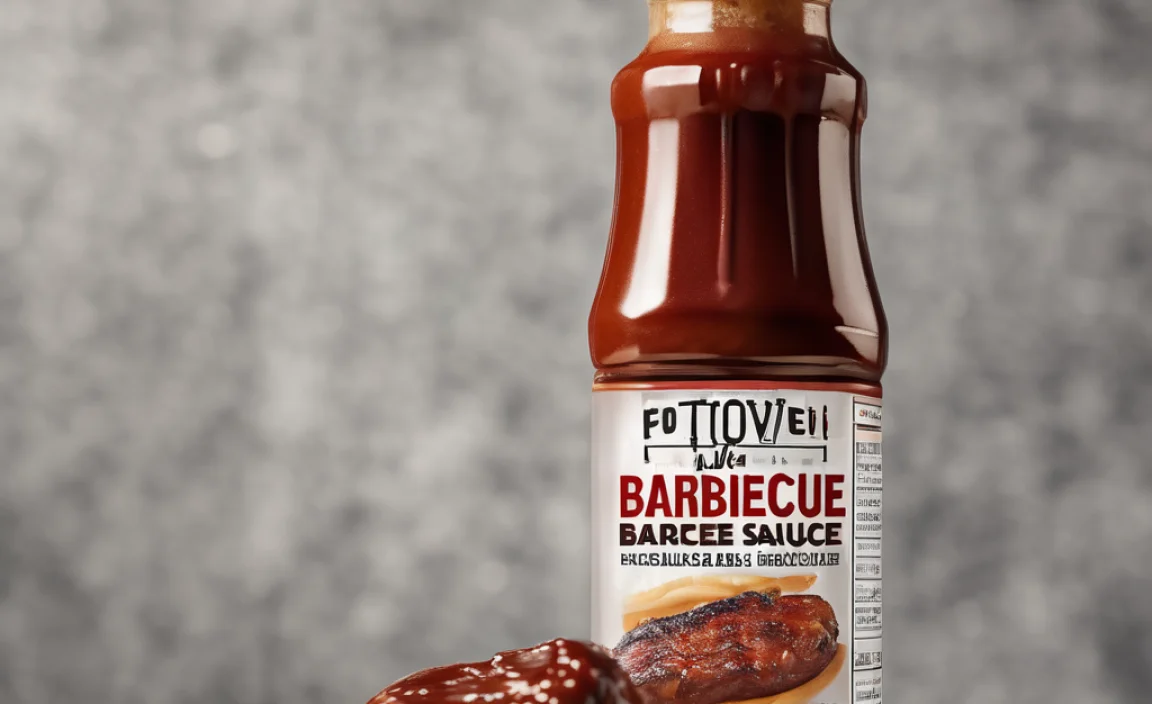
Before you dive into specific methods, gather these common household items. Most of these you likely already have in your home:
- Clean, white cloths or towels
- Paper towels
- Old toothbrush (soft bristles are best for denim)
- Liquid laundry detergent (ideally one with stain-fighting enzymes)
- Dish soap (especially good for the oily components of BBQ sauce)
- White vinegar
- Baking soda
- Hydrogen peroxide (3%)
- Optional: Commercial stain remover designed for tough stains
Proven Methods for Removing Barbecue Sauce from Jeans
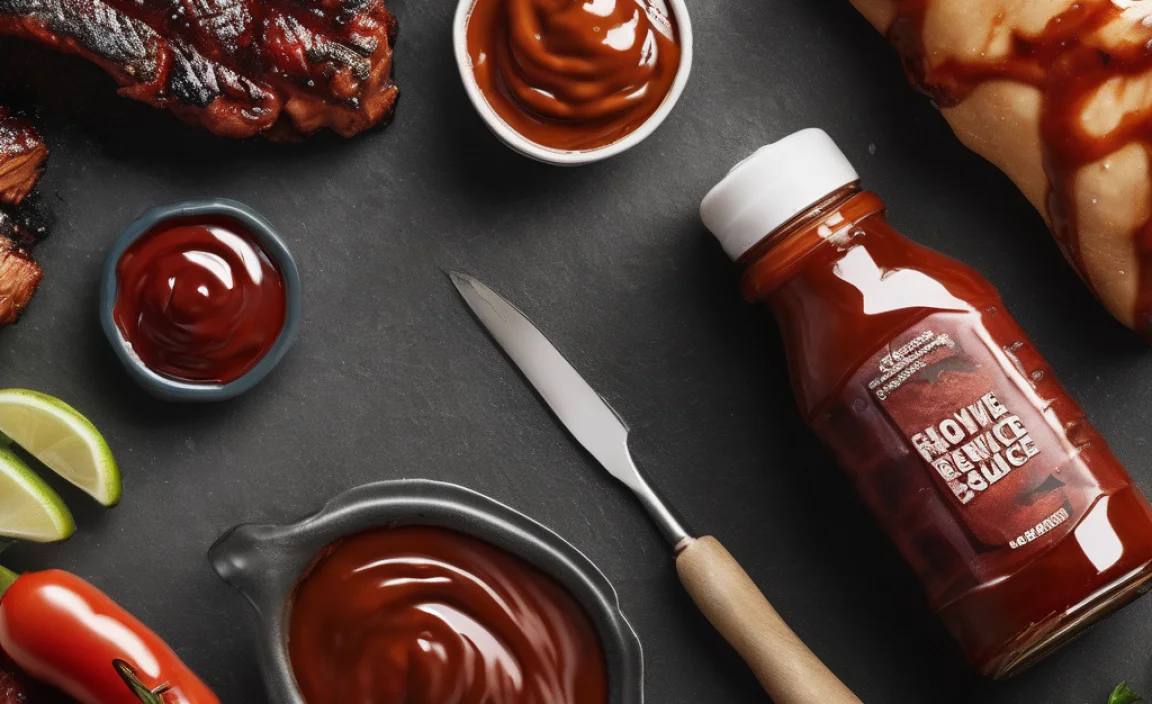
Here are the most effective methods, starting with the gentlest and progressing to more robust solutions for stubborn stains. Always test any cleaning solution on an inconspicuous area of your jeans first (like an inside seam) to ensure it doesn’t cause discoloration.
Method 1: Dish Soap and Water (Best for Fresh Stains)
Dish soap is excellent at breaking down grease and oil, which are often part of barbecue sauce. This method is ideal for stains that are still wet or have only been on the jeans for a short time.
- Prepare the Solution: Mix one tablespoon of liquid dish soap with two cups of cool water.
- Apply to Stain: Dip a clean cloth into the soapy water and gently blot the stain. Work from the outside edges of the stain toward the center.
- Let it Sit: Allow the soapy water to penetrate the stain for about 5-10 minutes.
- Rinse: Rinse the treated area thoroughly with cool water.
- Check and Repeat if Necessary: If the stain is gone, proceed to washing the jeans. If it has faded but is still visible, you can repeat the process or move to Method 2.
Method 2: Laundry Detergent Pre-Treatment
Liquid laundry detergent is formulated to lift stains. This is a great follow-up for fresher stains or a good first step for slightly older ones.
- Apply Detergent Directly: Pour a small amount of liquid laundry detergent directly onto the stained area.
- Gently Work It In: Use your fingers or a soft-bristled toothbrush to gently rub the detergent into the stain. Be careful not to damage the denim fibers.
- Let it Dwell: Let the detergent sit on the stain for at least 10-15 minutes. For older or tougher stains, you can let it sit for up to an hour.
- Rinse: Rinse the area with cool water.
- Launder as Usual: If the stain appears to be gone, wash the jeans in cool water with your regular detergent.
Method 3: Vinegar Solution (For Fading and Deodorizing)
White vinegar is acidic and can help break down some of the components of barbecue sauce. It’s also a natural deodorizer.
- Mix Vinegar and Water: Combine equal parts white vinegar and cool water in a bowl.
- Apply and Blot: Soak a clean cloth or sponge in the vinegar solution and blot the stain.
- Allow to Work: Let the solution sit on the stain for about 15-20 minutes.
- Rinse: Rinse the treated area with cool water.
- Wash: Launder the jeans as you normally would.
Method 4: Baking Soda Paste (Gentle Abrasive and Absorbent)
Baking soda is a mild abrasive and can help lift stains without damaging fabric. It’s also good at absorbing odors and some of the pigments from the sauce.
- Make a Paste: Mix baking soda with a small amount of water to create a thick paste.
- Apply to Stain: Spread the paste generously over the barbecue sauce stain. Make sure the entire stain is covered.
- Let it Dry: Allow the paste to dry completely on the stain. This might take a few hours.
- Scrape Off and Rinse: Once dry, gently scrape off the dried paste with a dull knife or brush. Then, rinse the area with cool water.
- Launder: Wash the jeans as usual.
Method 5: Hydrogen Peroxide (For Light Wash Jeans and Stubborn Stains)
Hydrogen peroxide is a mild bleaching agent and can be very effective on light-colored fabrics. Use with caution, as it can lighten darker colors. Always test first! For light wash jeans, this is often a go-to solution.
- Apply 3% Hydrogen Peroxide: Dampen a clean white cloth with 3% hydrogen peroxide (the kind found in pharmacies).
- Blot the Stain: Gently blot the stain with the hydrogen peroxide-dampened cloth. Work from the outside in.
- Let it Sit: Allow the hydrogen peroxide to work on the stain for about 10-15 minutes. You may see some bubbling, which is normal.
- Rinse Thoroughly: Rinse the area completely with cool water.
- Wash: Launder the jeans in the washing machine with your regular detergent.
For extremely stubborn stains on light wash jeans, you can create a paste of baking soda and hydrogen peroxide. Apply this paste, let it sit for 30 minutes to an hour, then rinse and wash. This combination offers both abrasion and bleaching power. Ensure you rinse very thoroughly to remove all peroxide before washing.
Method 6: Commercial Stain Removers
If household remedies aren’t cutting it, a dedicated commercial stain remover can be very effective. Look for products specifically designed for protein or grease stains. Follow the product’s instructions carefully.
When choosing a commercial stain remover, consider options with enzymatic cleaners, as these are particularly good at breaking down organic matter like food stains. A reputable option is OxiClean™, which uses an oxygen-based cleaning action that’s generally safe for most fabrics, including denim, when used as directed.
How to Use: Apply the stain remover directly to the stain, following the package directions. Allow it to sit for the recommended time, then launder the jeans as usual.
What NOT to Do
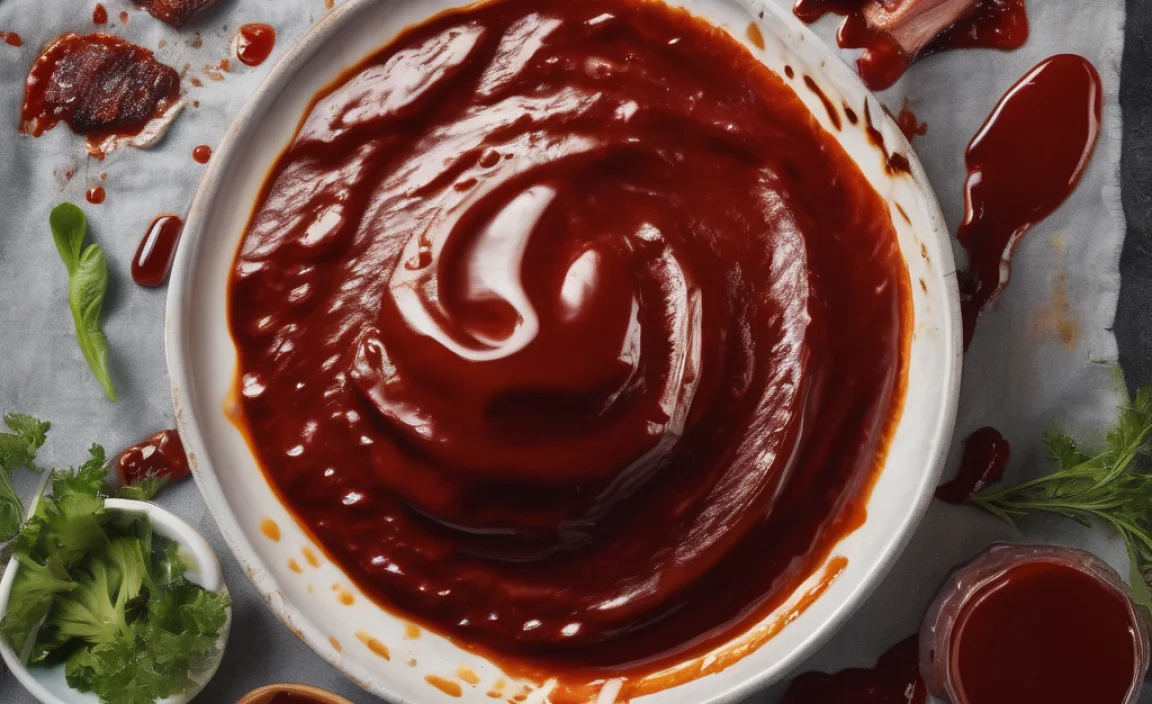
Here are a few common mistakes to avoid when tackling barbecue sauce stains:
- Don’t use hot water initially. Hot water can set protein-based stains and sugars, making them permanent. Stick to cool or lukewarm water until the stain is gone.
- Don’t put stained jeans in the dryer. The heat from the dryer will “bake” the stain into the fabric, making it nearly impossible to remove. Always air dry jeans until you are certain the stain is completely gone.
- Don’t bleach regular denim without extreme caution. While hydrogen peroxide works well for light washes, chlorine bleach can severely damage or discolor darker denim. If you must use bleach on light wash jeans, dilute it significantly.
Tackling Different Types of Jeans
The fabric composition and color of your jeans can influence the best approach:
Light Wash or White Jeans
You have more options here. Hydrogen peroxide is a great choice. For very stubborn stains, a paste of baking soda and hydrogen peroxide, or even a diluted amount of chlorine bleach applied very carefully, might be considered. Always test these aggressive treatments on an hidden area first.
Dark Wash or Colored Jeans
Be extra cautious to avoid color loss. Dish soap, laundry detergent, and vinegar are generally safe. Avoid hydrogen peroxide and chlorine bleach unless you’ve tested a small, hidden spot and are confident there’s no significant color change. If the stain is deep, you might need to consult a professional or accept a slight fading of the dye in that area.
Selvage Denim
Selvage denim is often 100% cotton and can be more delicate in terms of dye. Stick to the gentlest methods first: dish soap, laundry detergent pre-treatment. Avoid harsh chemicals and excessive rubbing, which can damage selvedge edges.
Understanding Stain Removal Science: Enzymes and pH
Stain removal isn’t just about scrubbing; it’s about chemistry! Most effective laundry detergents contain enzymes designed to break down specific types of stains. For food stains like barbecue sauce, enzymes like proteases (break down proteins) and amylases (break down starches) are particularly useful. These enzymes are most effective in cool to warm water, which is why avoiding hot water initially is crucial. For example, the enzymes in many commercial stain removers, like those found in EPA Safer Choice certified products, work by breaking down the chemical bonds of the stain components.
The pH level of cleaning agents also plays a role. Acids, like vinegar, can help lift mineral-based stains and some food pigments. Alkaline substances, like baking soda, can help break down greasy and oily components. Dish soap, with its surfactant properties, works by reducing the surface tension of water and lifting grease from fabric.
Table: Stain Removal Method Comparison
Here’s a quick look at how the methods stack up:
| Method | Best For | Pros | Cons | Caution |
|---|---|---|---|---|
| Dish Soap & Water | Fresh, light stains; oily components | Gentle, readily available | May not be strong enough for old stains | Use cool water |
| Laundry Detergent Pre-treatment | Most fresh to moderately old stains | Effective on various stains, readily available | Can be less effective on deeply set oil | Rub gently |
| Vinegar Solution | Fading, deodorizing, some pigment removal | Natural, good for colored jeans | Smell can be strong (dissipates when washed) | Dilute first |
| Baking Soda Paste | Mild stains, excellent for absorbing | Gentle abrasive, deodorizing | Drying time can be long | Brush off gently |
| Hydrogen Peroxide (3%) | Stubborn stains on light wash/white jeans | Effective bleaching action | Can bleach darker fabrics, test first | Use only on light/white denim unless tested. |
| Commercial Stain Remover | Tough, set-in stains | Specifically formulated for tough stains | Can be more costly, follow instructions precisely | Always test on an inconspicuous area |
When Professional Help is Needed
If you’ve tried several methods and the stain remains, or if your jeans are particularly valuable or made of a delicate material, it might be time to consider professional cleaning. Dry cleaners have access to specialized solvents and techniques that can tackle very persistent stains without damaging the fabric. However, for most denim and common barbecue sauce spills, the methods above should be sufficient.
FAQ: Your Barbecue Sauce Stain Questions Answered
Q1: My jeans are brand new and I just got a BBQ sauce stain, what’s the best way to get it out?
A1: Act fast! For new stains, gently scrape off excess sauce, then blot with a clean cloth. Immediately follow up with Method 1 (Dish Soap & Water) or Method 2 (Laundry Detergent Pre-treatment). Then, wash the jeans in cool water. If the stain persists, proceed to other methods, ensuring you test on an inconspicuous spot first.
Q2: Is it safe to use hydrogen peroxide on my dark blue jeans?
A2: It’s risky. Hydrogen peroxide is a mild bleaching agent and will likely lighten dark denim, leaving a noticeable spot. Always test on a hidden area, like an inside seam or hem, first. If you see any color change, avoid using it. Stick to gentler methods like dish soap or a detergent pre-treatment for dark jeans.
Q3: How long should I let a stain remover sit on the jeans?
A3: This depends on the product. Always read and follow the manufacturer’s instructions on the stain remover packaging. For most, letting it sit for 5-15 minutes is usually sufficient, but some may recommend longer dwell times for tougher stains.
Q4: Can I use the same method for all types of barbecue sauce (e.g., smoky vs. sweet)?
A4: Yes, generally the methods work for most varieties of barbecue sauce. The core issue is the combination of pigments, sugars, and oils. The methods described address these components. For very dark, molasses-based sauces, the dish soap can help with stickiness and oil, while vinegar or hydrogen peroxide can help lift the pigment.
Q5: What if the stain only became obvious after the jeans went through the dryer?
A5: Unfortunately, this means the heat likely set the stain. It will be much harder to remove. Try a combination of methods, perhaps starting with a strong commercial stain remover or a baking soda and hydrogen peroxide paste (if light wash), and letting them soak for an extended period (several hours or overnight) before washing again. You may need to repeat treatments.
Q6: Should I wash the jeans immediately after treating the stain?
A6: Yes, once you’ve treated the stain with your chosen method, it’s best to wash the jeans immediately afterward in cool water. This helps rinse away the loosened stain particles and any cleaning residue. Always check the jeans for remaining stain marks before putting them in the dryer.


